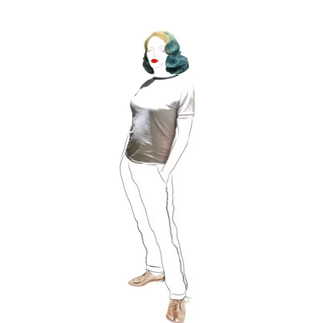
SERGE TO THE STARS
- reynaldorobinson
- Jan 5, 2024
- 3 min read
Updated: Jul 12, 2024
My first ever forage into sergers or overlockers (as we say in the UK) was many years ago when I became the owner of the excellent New Home Combi 10 sewing machine which had a mini 2 thread overlocker on its reverse side.

The New Home Combi 10
It was revolutionary at the time - making my clothes look professional from the inside to the out. Hot on the heels of my 2 thread simple overlocker was a ‘serge’ (get it) in 4 thread and 5 thread overlockers (I’ve skipped the 3 thread - because these were around in relative abundance at the time - although the prices were generally prohibitive). This surge, interestingly, coincided with a boom in sewing lycra based and stretch fabrics. And the need to create a ‘professional’ look when sewing at home.
Sewing stretch fabrics with a 3, 4 or 5 thread overlocker can give amazing results. Unlike a normal machine the serger will trim excess seam allowance and the different stitching lines will encase the seam allowance whilst providing stretch and movement to the stretchy seams of lycra based/stretch fabric.
Additionally, if you use polyester stretchy or woolly nylon thread in the loopers of your overlocker/serger will also increase/improve the ’stretchability’ of your make. Highly necessary for sportswear (which needs to allow excess amounts of movement) or clothes which provide a little extra ‘give’ for comfort or when you want a garment to drape without cutting it on the bias. A final plus point is that your overlocker/serger also ‘finishes’ garment seams in the process of construction thus speeding up making times.
For more information on the types of thread to use take a look here - I found this blog very helpful.
I see problems arising if a seam is tricky to sew: it is too curvy or too short. And perhaps more problematically if the sewer stretches the fabric whilst sewing, causing seams to ripple and look badly executed. However, sewing construction mishaps can be avoided by practice, practice, practice - from the off-cuts of the fabric from which your intended garment will be made. This tactic will enable you to get the thread tensions just right and train you to guide the fabric through the machine, holding the fabric neither too loosely or more commonly too tightly - which results in un-flat, stretched seams.
An easy way to get to grips with using your serger is to start with a simple ‘minimum effort/maximum gain’ sewing pattern. SURPRISE!… we have one for you: The Boyfriend Tee is a dressmaking pattern which we designed to have relatively smooth, un-curved seams which aren’t too short. Enabling you to familiarise yourself with holding the fabric at the correct tension as it passes through the machine. And when sewing, not having to start then quickly stop the serger, enabling you to get used to the pace of sewing flat un-stretched seams.
The Boyfriend Tee
We deliberately didn’t write instructions for the construction of this pattern, rather we made a step by step guide in pictures over on Pinterest. We thought this would be more fitting for the simple making up process - perhaps we’ll write formal instructions in the future but in the mean time...
This T-Shirt is in several sizes, some areas are verging on negative ease: ease is enabled by the stretch within the fabric - which often happens when you want a stretch garment to kiss your curves as opposed to slobber all over them. You should check the specification sheet before choosing the size for you and cut your cloth accordingly…so to speak…











Comments